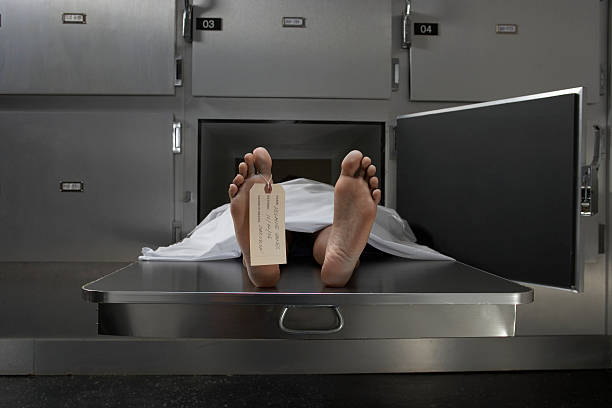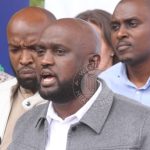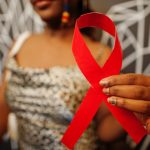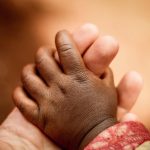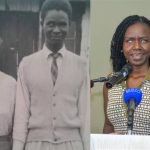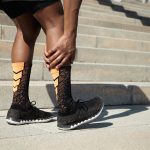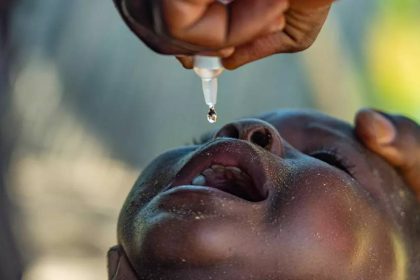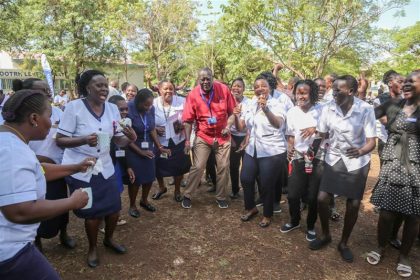Nairobi Funeral Home plans to dispose of 120 unclaimed bodies when 30 medical students share one cadaver in Human Anatomy classes
By Robert Amalemba
On August 22, the Nairobi City County announced it would dispose of 120 unclaimed bodies at the Nairobi Funeral Home within seven days due to limited space and resources. This public notice from the County Health, Nutrition, and Wellness department is one of many similar announcements from other mortuaries across the country.
Ironically, these periodic disposals occur when students in medical schools face a perennial shortage of cadavers for dissection during human anatomy classes which compromises the quality of learning anatomy, research and clinical skills.
The immediate outcry over the disposal of unclaimed bodies came from human rights activists over fears the action could frustrate efforts by relatives seeking their missing loved ones, particularly those who disappeared during recent pro-good governance protests in Kenya.
While these concerns are valid, the lack of bodies for educational purposes still poses a significant challenge for practical lessons in medical schools.
Dr Adolf Muyoti, a consultant medical practitioner, says cadaver dissection has been part of anatomy classes since the third century and a core component of medical education from the 18th century and they help students grasp the complexities of the human body in ways that textbooks cannot replicate.
He wonders why “we have an acute shortage of cadavers for medical students in universities but no outcry from medics regarding the practice of disposing of cadavers and unclaimed bodies when they could be reserved for medical purposes.”
Dr Paul Udula, an anatomy lecturer and Vice President of the Surgical Society of Kenya, lamented last year that the University of Nairobi could be forced to reduce the number of undergraduate medical students due to a shortage of cadavers: about 30 undergraduate students often shared one cadaver, as opposed to the recommended eight for effective learning.
Lessons that could last two hours often extend to five hours to ensure cadaveric dissection—an essential and effective teaching method for anatomy—can be adequately covered.
That the number of postgraduate students shot from 30 to 100 at the University of Nairobi does not help matters.
The severity of the shortage has led to postgraduates sharing cadavers with undergraduates, a situation compounded by the fact that the university’s body donation programme hasn’t increased cadaver numbers.
“We have resolved to a hybrid method that combines physical training and virtual learning, where students learn through already dissected bodies to bridge the time gap in surgical training,” Dr Udula told Business Daily.
Kenya has 20 medical training schools, many of which are increasingly relying on virtual sessions despite the existence of an act enacted in 1966, three years after Kenya gained independence, to facilitate the donation of bodies.
George Muruli, a medical student at Masinde Muliro University of Science and Technology, explains that “understanding human anatomy with real specimens is transformative. It is about preparing ourselves to provide the best care possible to our future patients.”
Dr Muyoti worked in the United States where cadavers used were donations, a stark contrast to Africa where cultural beliefs, social mores, religion, complex legal frameworks and logistical factors create perennial shortages.
Dr Kaikai Kulabusia, a medical lecturer at Egerton University’s School of Medicine hails from the Luhya community of Western Kenya, and though he has no heartburn donating his body for medical research, he is aware “I belong to a society where decisions about the disposal of my body after death are influenced by the majority. So, my wish remains just that—a wish.”
Dr Kulabusia says he has witnessed “families demanding amputated limbs from hospitals for burial and parents insisting on retrieving the foreskins of their sons during Bukusu circumcision rites, fearing someone might use them for malicious purposes. We have a long way to go before body donation is widely accepted.”
He concludes that “this mindset also affects university programmes involving body donations, especially because universities are embedded within these communities.”
Indeed, when Masinde Muliro University of Science and Technology (MMUST) in Kakamega sought to establish a medical school in 2019, it was particularly difficult to convince the community about the necessity of cadavers for medical training despite extensive civic education and countless media appearances by then Vice Chancellor Prof Fredrick Otieno.
Dr Kulabusia also cites several medical professionals—whose careers were ruined over bodies-including former Chief Government Pathologist, the late Dr Moses Njue who tried setting up a medical training school, only to be dragged into court over accusations of human body part trafficking without evidence.
Dr Kulabusia also adds the recent case of “a medical doctor from Eldoret whose career in politics and medicine is in jeopardy for advocating for the culture of donating cadaver for medical study.”
Dr Kulabusia further noted that men, due to their higher risk exposure in many communities, tend to provide the majority of cadavers available for medical study. This gender imbalance, however, can affect learning, as medical students may struggle to fully understand female-specific anatomical and physiological differences.
“This is why students often move between universities or even to morgues, searching for cadavers that match the gender they need for study,” he explained. “We need to educate society to change the negative attitudes toward donating cadavers, which have contributed to the shortage we face today,” he added.
The shortage of cadavers in medical schools has persisted for over five decades. Even when Dr Muyoti was a student at the University of Nairobi in the mid-1980s, he recalls, cadavers were often sourced from neighbouring Uganda.
In fact, the first 10 cadavers when the University of Nairobi School of Medicine admitted its first anatomy students in the late 1960s, were ferried from Uganda using a Land Rover driven by its first head, the late Prof Joseph Maina Mungai as he recalled in his 2002 autobiography, From Simple to Complex.
Uganda then had a Special Anatomy Law that allowed Makerere University (where Prof Mungai had first worked) to collect unclaimed bodies from morgues for teaching purposes.
The Human Tissue Act was later enacted to regulate the use of deceased persons’ body parts for therapeutic, educational, and research purposes.
Under this law, individuals can consent for their bodies or specific parts to be used for medical purposes posthumously, either in writing or orally, witnessed by at least two people unless the request was revoked before death.
Moreover, the Act stipulates that the lawful possessor of a deceased person’s body may authorize the removal of body parts for medical purposes, provided reasonable inquiries have been made to confirm that no objections were expressed by the deceased or surviving relatives. This authorization is crucial for facilitating medical research and education while respecting the deceased’s autonomy and the concerns of their families.
However, strict regulations govern the removal of body parts under this Act.
Only licensed medical practitioners, after confirming the cessation of life through personal examination, are permitted to remove tissues.
Additionally, if there is a potential for an inquest or post-mortem examination, consent must be obtained from the relevant authorities, ensuring that legal and ethical standards are upheld in the handling of human tissue for medical advancement and education in Kenya.
This line is what Dr Muyoti feels makes mortuaries in Kenya dispose of rather than offer bodies for medical studies in most African countries.
“I am happy we are creating public awareness—by dispelling myths surrounding body part donations and promoting understanding,” says Dr Muyoti. “This will encourage more Kenyans to consider this altruistic gesture and stop the practice of disposing of unclaimed bodies when they can be used for first-hand training to medical students.”
This shortage of cadavers comes even as a survey published in the Ethiopian Journal on the Perception and Attitude of Medical Students toward Cadaveric Dissection in Anatomical Science Education indicates that the majority of students (84.5 per cent) find dissection more interesting and the best way to understand the human body. About 87 per cent of students reported that dissection aids in retaining theoretical knowledge, and 74.5 per cent felt that dissection should not be replaced by other learning methods.
Bodies typically stay in the lab from 18 to 24 months in medical universities with regular donors, but research shows they could last up to six years.
To start remedying the situation, Allan Odhiambo, a social worker in Homa Bay County suggests that medical professionals should lead by example, advocating for body donation while also addressing the misconceptions surrounding it besides the need for extensive sensitization and awareness of body donor programmes via active campaigns.
Beverley Kramer, in her paper “Challenges to Sourcing Human Bodies for Teaching and Research in Africa: Are the Challenges Insurmountable?” published this year on ScienceDirect, notes that the unwillingness of both anatomists and medical students to become body donors exacerbates the issue, not just in Africa but globally. This reluctance may send a discouraging message to the broader public, potentially dissuading others from considering body donation. Promoting a culture of self-donation within the medical community could be pivotal in encouraging wider participation in body donor programs.

